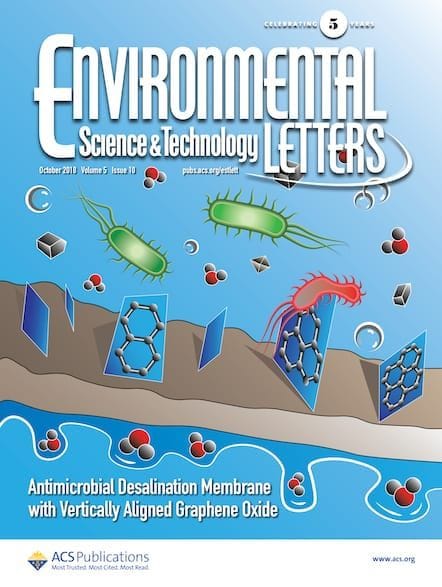Learn about the surprising persistence of mercury in tuna and its global implications for our health and environment—and why science is crucial in tackling this enduring issue.

For many years, one of the biggest concerns with tuna fishing was its lack of species specificity—trawler nets would often end up harming dolphins, who share the same waters. This led to the introduction of “dolphin-friendly” tuna1—a labeling system which runs mainly on trust. However, aside from these regulations, it might be time to consider the broader environmental impact of our tuna consumption. Many environmental contaminants and toxins build up in animals, and the tuna is an apex predator at the top of its food chain. This means the flesh can contain high levels of methylmercury accrued from feeding on smaller fish or crustaceans. Despite efforts to reduce mercury emissions, new research reported in Environmental Science & Technology Letters shows that levels of this dangerous chemical in tuna are the same as they were in 1971.2
Methylmercury is created when mercury from human activities enters marine systems,3 particularly in oxygen-deficient environments.4 In humans, the main exposure to this chemical comes from eating marine fish, and adverse effects can include neurocognitive deficits in fetuses and children, plus cardiovascular effects in adults.5,6
To explore how levels have changed in tuna over time, the researchers collected data on mercury concentrations in fishstocks from 1971 to 2022. Their findings revealed significant yearly fluctuations in mercury levels globally, with notable variations across different regions. For instance, mercury concentrations increased in skipjack tuna in the late 1990s in the northwestern Pacific, possibly due to an increase in mercury emissions from Asia, which are known to have increased since the 1980s.7
But elsewhere, there were stable long-term trends—an interesting finding that contrasts with an overall decline in global mercury emissions from human activities since the 1970s. Modeling suggests that this reflects fairly stable levels of mercury in surface oceans—despite emissions falling—because it is being topped up from deeper sea layers, where deposits have accumulated over previous centuries. In fact, research suggests that New World silver mining from the 1500s to 1800s could represent the largest human source of atmospheric mercury in history.8 In addition to environmental factors, other teams have looked at marine physiology, noting that bigger fish tend to accumulate more methylmercury.9
Taking all these factors into account means more aggressive emission reduction targets are needed to bring down mercury levels in tuna used for human consumption. But to do so will require better understanding of both mercury emissions and legacy effects. An inventory is critical to this endeavor—and a model for improving the accuracy of emissions has been proposed in Environmental Science & Technology by a team from Nanjing University in China.10 Previous analyses have traditionally assumed that the recycling of previously deposited legacy mercury is constant and have not accounted for possible future growth, but integrated modeling suggests that each 5-year delay in reducing emissions leads to a 14% decrease in policy impacts on local-scale deposition.11
The persistent presence of mercury in tuna underscores the urgent need for stricter emission controls and the adoption of precise, reliable methods for tracking and modeling environmental data. Only through a deeper understanding and proactive measures can we hope to safeguard our health and that of the planet, ensuring that the seafood we enjoy today does not become a legacy of harm for future generations.
References
- Frequent Questions: Dolphin-Safe. National Oceanic and Atmospheric Administration, U.S. Department of Commerce.
- Médieu, A. et al. Stable Tuna Mercury Concentrations since 1971 Illustrate Marine Inertia and the Need for Strong Emission Reductions under the Minamata Convention. Environ. Sci. Technol. Lett. 2024, 11, 3, 250–258.
- Outridge, P. M. et al. Updated Global and Oceanic Mercury Budgets for the United Nations Global Mercury Assessment 2018. Environ. Sci. Technol. 2018, 52 (20), 11466–11477.
- Capo, E. et al. Expression Levels of hgcAB Genes and Mercury Availability Jointly Explain Methylmercury Formation in Stratified Brackish Waters. Environ. Sci. Technol. 2022, 56, 18, 13119–13130.
- Axelrad, D. A. et al. Dose–Response Relationship of Prenatal Mercury Exposure and IQ: An Integrative Analysis of Epidemiologic Data. Environ. Health Perspect. 2007, 115 (4), 609–615.
- Genchi, G. et al. Mercury Exposure and Heart Diseases. IJERPH 2017, 14 (1), 74.
- Streets, D. G. et al. Global and Regional Trends in Mercury Emissions and Concentrations, 2010–2015. Atmos. Environ. 2019, 201, 417–427.
- Outridge, P. M. et al. Updated Global and Oceanic Mercury Budgets for the United Nations Global Mercury Assessment 2018. Environ. Sci. Technol. 2018, 52, 20, 11466–11477.
- Houssard, P. et al. A Model of Mercury Distribution in Tuna from the Western and Central Pacific Ocean: Influence of Physiology, Ecology and Environmental Factors. Environ. Sci. Technol. 2019, 53, 3, 1422–1431.
- Zhang, Y. et al. Improved Anthropogenic Mercury Emission Inventories for China from 1980 to 2020: Toward More Accurate Effectiveness Evaluation for the Minamata Convention. Environ. Sci. Technol. 2023, 57, 23, 8660–8670.
- Angot, H. et al. Global and Local Impacts of Delayed Mercury Mitigation Efforts. Environ. Sci. Technol. 2018, 52, 22, 12968–12977.
